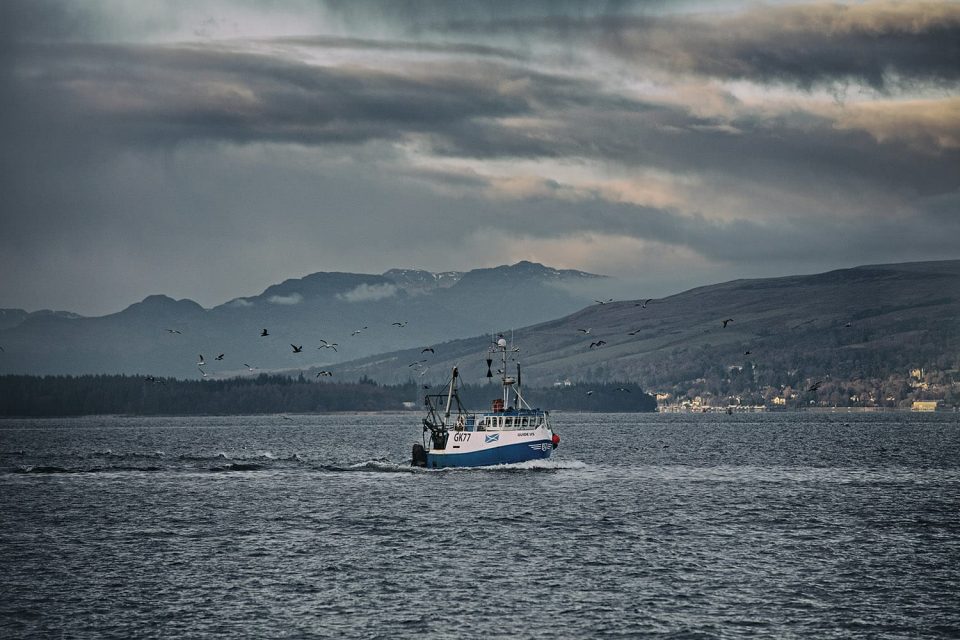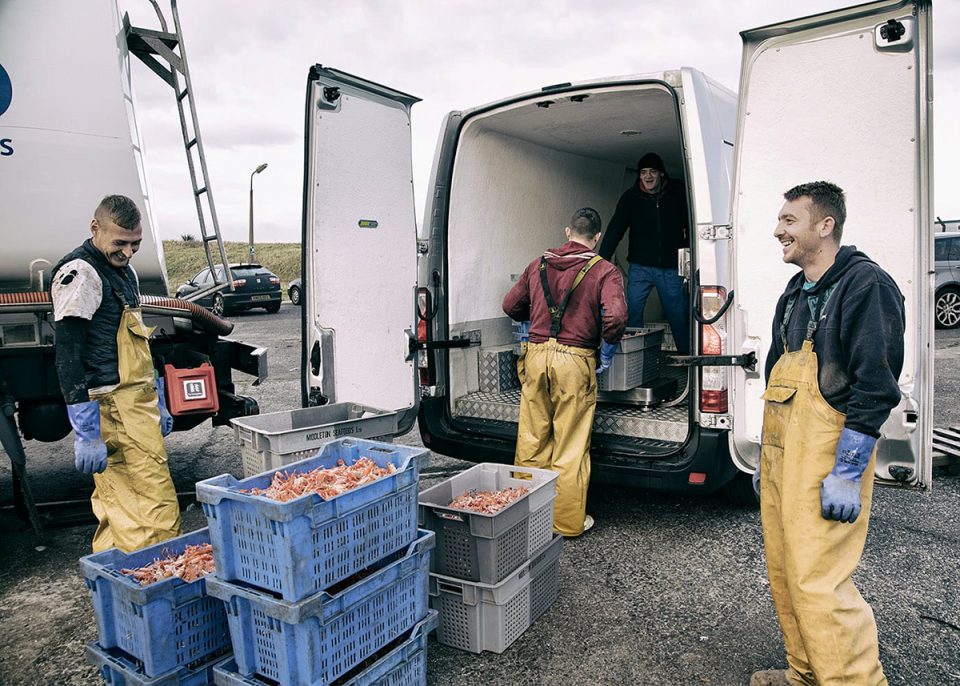A recent paper claims that marine protected areas are the solution to curbing the environmental impacts of bottom trawling. Others say it’s not that simple.

Seafood has frequently been dubbed as one of the most climate-friendly foods on the planet. A recent peer-reviewed study published in Nature challenges this claim, arguing that bottom trawling – in which a fishing vessel pulls or drags a fishing net across the ocean floor – may be releasing more carbon emissions than the aviation industry. The authors are now calling for more marine protected areas, or MPAs, that exclude bottom trawling to curb emissions from commercial fishing.
“We were surprised to find that trawling had such large impacts on seabed carbon storage,” Dr. Trisha Atwood, one of the paper’s authors and associate professor in the College of Natural Resources at Utah State University, told the Advocate.
The authors, a team of climate experts, marine biologists and economists, argue that closing off major areas of the ocean to bottom trawling by introducing MPAs with commercial fishing bans can help to preserve biodiversity and increase the productivity of commercial fisheries.
“The impacts of trawling on seafloor carbon storage could be reduced by protecting carbon hotspots and moving trawling to lower-impact areas,” said Atwood. “Our study provides a plan, not just for where we can protect the most carbon [from release], but also for how we can help enhance food security and protect biodiversity.”
The authors identified priority protection areas by analyzing areas of the ocean most impacted by human activity that could be reduced through the creation of MPAs. They then produced a map identifying areas of the global ocean that would benefit most from protection.
The paper’s findings have been critiqued by other scientists, including Dr. Ray Hilborn, a University of Washington Professor of Aquatic and Fishery Sciences, and Dr. Jan Geert Hiddink, a professor in the School of Ocean Sciences at Bangor University in Wales.
“The paper seems to rely on a lot of assumptions that are poorly underpinned,” Hiddink explained, highlighting several major concerns, one being the authors’ assumption that all bottom-trawling fisheries create the same amount of emissions. “In some places you get very big carbon emissions from bottom trawling and in others you get less.”
https://www.aquaculturealliance.org/advocate/quantifying-greenhouse-gas-emissions-from-global-aquaculture/
Hiddink said that there is currently not enough knowledge to create a global map like the one included in this paper to confidently determine where reducing trawling effort would also reduce emissions. Hiddink also concluded that not only is the map likely inaccurate but the solution to create more MPAs to reduce emissions is also flawed: “Their model assumes trawling just stops with MPAs, but in reality, it just moves elsewhere.”
MPAs have been a widely debated topic, though momentum has been growing in recent years due to many global milestones and announcements, including President Joe Biden’s recent commitment to protect 30 percent of the oceans by 2030. Currently, 26 percent of the country’s oceans are protected by MPAs.
While MPAs can be effective management tools for specific coastal habitats, many fisheries scientists echo Dr. Hiddink’s comments that MPAs are often an ineffective solution, specifically when it comes to MPAs that interfere with fishing efforts. These scientists argue that MPAs don’t stop fishing effort, rather they simply displace it.
Dr. Hiddink said that displacing fishing efforts may also undermine any positive biodiversity benefits generated by the MPA that caused the fishing grounds to move. “If you want to create MPAs, then you need to think about what’s going to happen to the fishing effort that used to be in that MPA. The biodiversity in your MPA might improve, but the improvement likely will not outweigh the negative impacts of the displacement of fishing to other areas.”

Without a long-term plan in place for local fishermen, such as a government buyout, fishermen have no choice but to fish elsewhere in order to make a living. In order for MPAs to be effective in the long term, it can’t be assumed that fishing effort is going to disappear. Instead, decision-makers need to plan for its relocation.
Elaine Whyte of the Clyde Fishermen’s Association said that creating MPAs without considering fishermen’s livelihoods has resulted in more than a dozen boats being forced out of their fishery off the west coast of Scotland.
“The reality is, most fishermen support MPAs when consultation is done properly,” Whyte said. However, in 2016 trust was broken between local fishermen and decision-makers when an agreed-upon MPA proposal was changed at the last moment, without consulting local fishermen. “Fishermen feel excluded from these decisions. They’re almost treated with contempt at times,” she said.
The agreed-upon proposal would’ve seen sections of the island’s coastal waters closed off to certain types of fishing, including trawling, while leaving other areas open. The final decision resulted in the entirety of the island’s coastal waters being closed off to trawling and other mobile fishing gear. Whyte added: “The fishing pressure has actually increased from what it was when it was a mixed fishery because the amount of people fishing with static gear has gone up exponentially.”
Any benefits from MPAs can’t be successful without properly accounting for the displacement of fishing effort caused as a result, she concluded: “If everyone could just come to the table with good intentions, there’s a lot of good work we could do.”
Follow the Advocate on Twitter @GAA_Advocate
Now that you've finished reading the article ...
… we hope you’ll consider supporting our mission to document the evolution of the global aquaculture industry and share our vast network of contributors’ expansive knowledge every week.
By becoming a Global Seafood Alliance member, you’re ensuring that all of the pre-competitive work we do through member benefits, resources and events can continue. Individual membership costs just $50 a year. GSA individual and corporate members receive complimentary access to a series of GOAL virtual events beginning in April. Join now.
Not a GSA member? Join us.
Author
-
Emily De Sousa
Emily is a fisheries scientist and a social media influencer based in Niagara, Ontario, Canada. She is the founder of Seaside with Emily, an online travel and seafood blog. She works in the Coastal Routes lab, where her research focuses on alternative seafood networks in North America.
(Instagram: @seasidewithemily, Twitter: @emilyseaside, Linkedin: Emily De Sousa)


